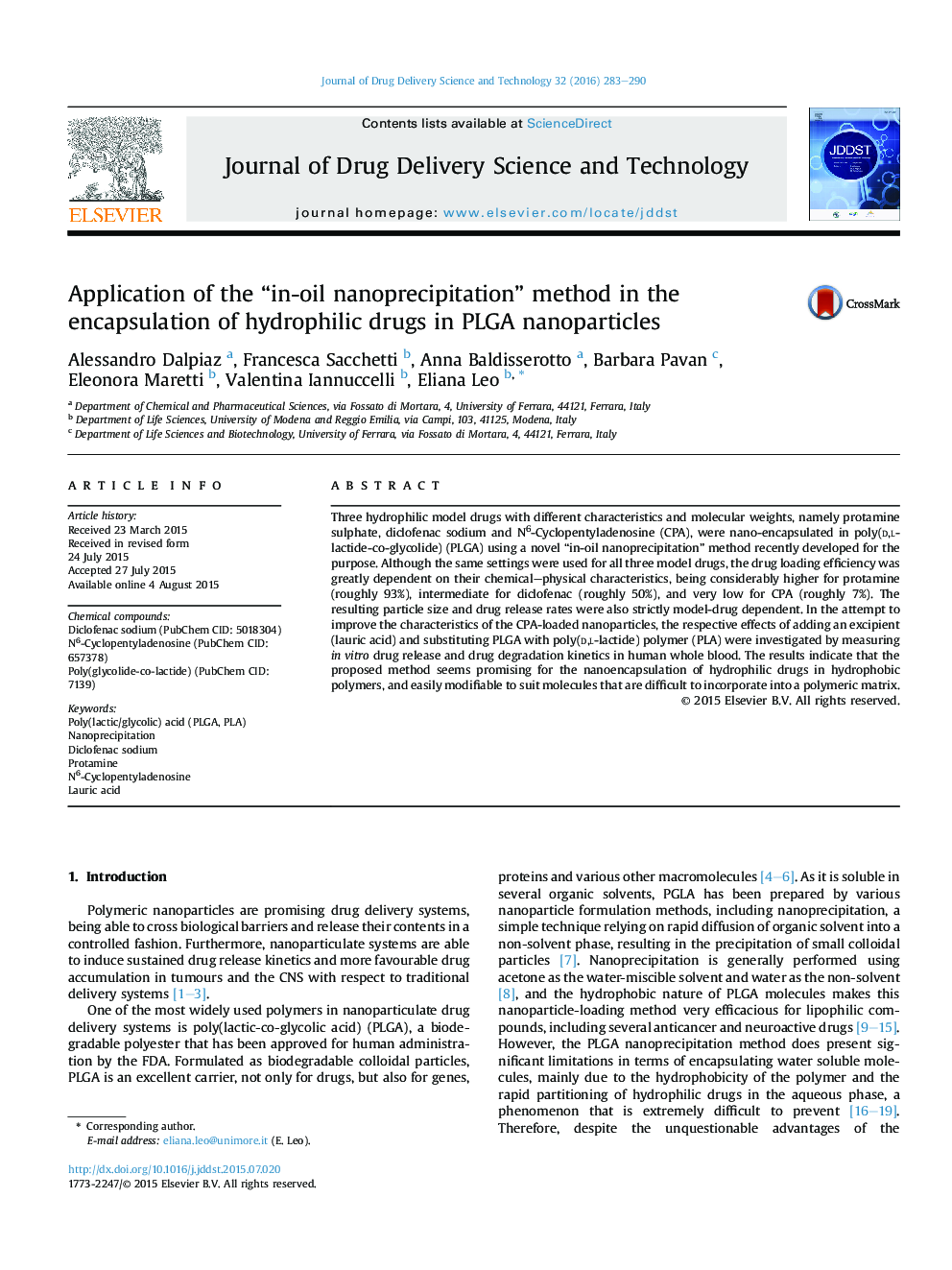| کد مقاله | کد نشریه | سال انتشار | مقاله انگلیسی | نسخه تمام متن |
|---|---|---|---|---|
| 2483054 | 1114203 | 2016 | 8 صفحه PDF | دانلود رایگان |

Three hydrophilic model drugs with different characteristics and molecular weights, namely protamine sulphate, diclofenac sodium and N6-Cyclopentyladenosine (CPA), were nano-encapsulated in poly(d,l-lactide-co-glycolide) (PLGA) using a novel “in-oil nanoprecipitation” method recently developed for the purpose. Although the same settings were used for all three model drugs, the drug loading efficiency was greatly dependent on their chemical–physical characteristics, being considerably higher for protamine (roughly 93%), intermediate for diclofenac (roughly 50%), and very low for CPA (roughly 7%). The resulting particle size and drug release rates were also strictly model-drug dependent. In the attempt to improve the characteristics of the CPA-loaded nanoparticles, the respective effects of adding an excipient (lauric acid) and substituting PLGA with poly(d,l-lactide) polymer (PLA) were investigated by measuring in vitro drug release and drug degradation kinetics in human whole blood. The results indicate that the proposed method seems promising for the nanoencapsulation of hydrophilic drugs in hydrophobic polymers, and easily modifiable to suit molecules that are difficult to incorporate into a polymeric matrix.
Figure optionsDownload as PowerPoint slide
Journal: Journal of Drug Delivery Science and Technology - Volume 32, Part B, April 2016, Pages 283–290